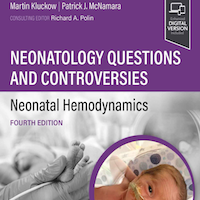Tag: pediatrics
ECMO Use in Pediatric Trauma: National Trauma Data Bank Report
The findings of this study support the increasing use of extracorporeal membrane oxygenation (ECMO) as a potentially effective intervention for pediatric trauma patients, including those with TBI. While ECMO provides... read more
The Role of Rotational Thromboelastometry in Early Detection of the Hemostatic Derangements in Neonates with Systemic Candida Infection
Rotational thromboelastometry (ROTEM) parameters revealed a hypocoagulable profile in neonates during the early stages of SCI, which is also associated with disease severity. The results of this study highlight the need for... read more
Weaning Sedation in Pediatric Intensive Care
The use of sedation and analgesia to provide comfort, safety, and pain treatment are central principles in the care of critically ill children. Most critically ill children are at risk of experiencing pain and discomfort... read more
Management of Pain, Anxiety, and Delirium in Critically Injured Pediatric Trauma Patients
PICU-specific care bundles have been beneficial in standardizing the assessment, prevention and treatment of pain, anxiety and delirium. While these practices show promise in addressing current management challenges in... read more
Intranasal Dexmedetomidine vs. Inhaled Nitrous Oxide for Pediatric Procedural Sedation and Analgesia
The results of this clinical trial support that IN DEX is not inferior to 50% nitrous oxide in providing analgesia for a painful procedure among children 3–15 years of age. Furthermore, IN DEX can be considered as an alternative... read more
Critical Care Pediatric Nephrology and Dialysis
This book covers all key aspects of critical care in pediatric nephrology, including acute dialysis in sick children. It also provides detailed protocols for managing fluid and electrolyte balance and dialysis in children... read more
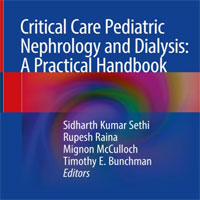
Dexmedetomidine for Electroencephalogram in Children with Behavioural Disorders
Intranasal (IN) dexmedetomidine (DEX) is an effective sedative; its recovery time shorter than IV DEX and its favorable adverse events profile make this route a reasonable alternative, especially in pediatric patients with... read more
CDC Reports Rising Levels of Mycoplasma Pneumonia and RSV in Young Kids
Though the nation’s respiratory disease levels remain low overall, with COVID levels declining and little sign of a flu uptick, illnesses caused by Mycobacterium pneumoniae are increasing, especially in children, and respiratory... read more
The Impact of COVID-19 Pandemic on Respiratory Syncytial Virus Infection in Children
We observed a lower incidence of RSV infection and a lower rate of hospitalization for RSV during the COVID-19 pandemic. The second RSV season during the COVID-19 pandemic began earlier, lasted longer, and had a lower frequency.... read more
Advances in Critical Care Pediatric Nephrology: Point of Care Ultrasound and Diagnostics
The book covers advances in critical care pediatric nephrology, including care of sick children with acute kidney injury. The book contains detailed guidance on point of care ultrasound in children with acute kidney injury... read more
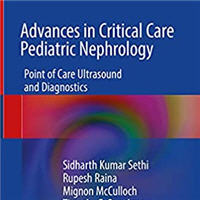
Pediatric Critical Care: A Primer for All Clinicians
Pediatric critical care is an emotionally and intellectually demanding field of medicine; however, it is at its core the discipline focused on saving and improving the lives of children affected by acute and chronic illnesses,... read more
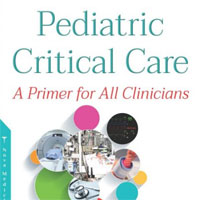
Resuscitation Arterial Waveform Quantification and Outcomes in Pediatric Patients
Providing physiologically adequate CPR for pediatric single ventricle patients palliated with Bidirectional Glenn (BDG) or Fontan physiology is challenging. Only 27% of Fontan patients survived to hospital discharge with... read more
Outcomes of ECMO in ARDS in Pediatric Trauma Patients
Among children who suffer from acute respiratory distress syndrome (ARDS) complications following trauma, the use of extracorporeal membrane oxygenation (ECMO) failed to show any association with mortality benefit. More... read more
Influenza and COVID-19 Vaccination Rates Among Children Receiving Long-Term Ventilation
Children with tracheostomy and HV are at high risk of morbidity and mortality from viral ARIs. Among MyTRaCh enrollees, we found significant discrepancy between influenza and COVID-19 vaccination status. Compared with... read more
Longitudinal Changes in Emergency Medical Services Advanced Airway Management
Our cross-sectional study offers important contemporary perspectives of the current patterns of EMS advanced airway management in the US. Using the large ESO dataset, which encompasses EMS events from across the US, we observed... read more
Pediatric Liver Intensive Care
Acute management of children with liver disease and liver transplantation has rapidly evolved over the last two decades due to worldwide availability of complex liver surgery and liver transplantation. This book edited... read more
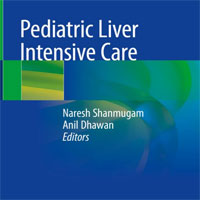
Hospitalizations for Multisystem Inflammatory Syndrome in Children (MIS-C) in US
Multisystem inflammatory syndrome in children (MIS-C) is a rare, serious condition characterized by fever and multiorgan involvement that occurs after SARS-CoV-2 infection. US Centers for Disease Control and Prevention... read more
Pediatric Sepsis Phenotype with Persistent Hypoxemia, Encephalopathy, and Shock
We derived and validated the persistent hypoxemia, encephalopathy, and shock phenotype, which is highly reproducible, clinically relevant, and associated with HTE to common adjuvant therapies in children with sepsis. We... read more
Propofol-Related Infusion Syndrome in a Child with RSE
Propofol is used for sedation, anxiolysis, anesthesia induction, and as an anticonvulsant. In cases of refractory status epilepticus (RSE), propofol is more efficient than barbiturates. We present a case of a 3-year-old... read more
Fleisher & Ludwig’s Textbook of Pediatric Emergency Medicine
Fleisher & Ludwig's Textbook of Pediatric Emergency Medicine has long been acknowledged as the indispensable comprehensive clinical reference on diagnosing and managing emergent health issues in children. Now, a new editorial... read more
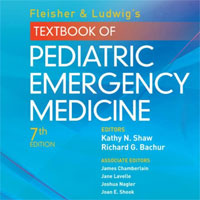
Feasibility of HEMS Performed Prehospital E-CPR in Pediatric Cardiac Arrests
This case-series shows that a properly trained regular Helicopter Emergency Medical Services (HEMS) crew of only two health care professionals (doctor and flight nurse) can establish Extracorporeal-Cardiopulmonary Resuscitation... read more
Neonatology Questions and Controversies: Neonatal Hemodynamics
Dr. Richard Polin's Neonatology Questions and Controversies series highlights the toughest challenges facing physicians and care providers in clinical practice, offering trustworthy guidance on up-to-date diagnostic and treatment... read more
